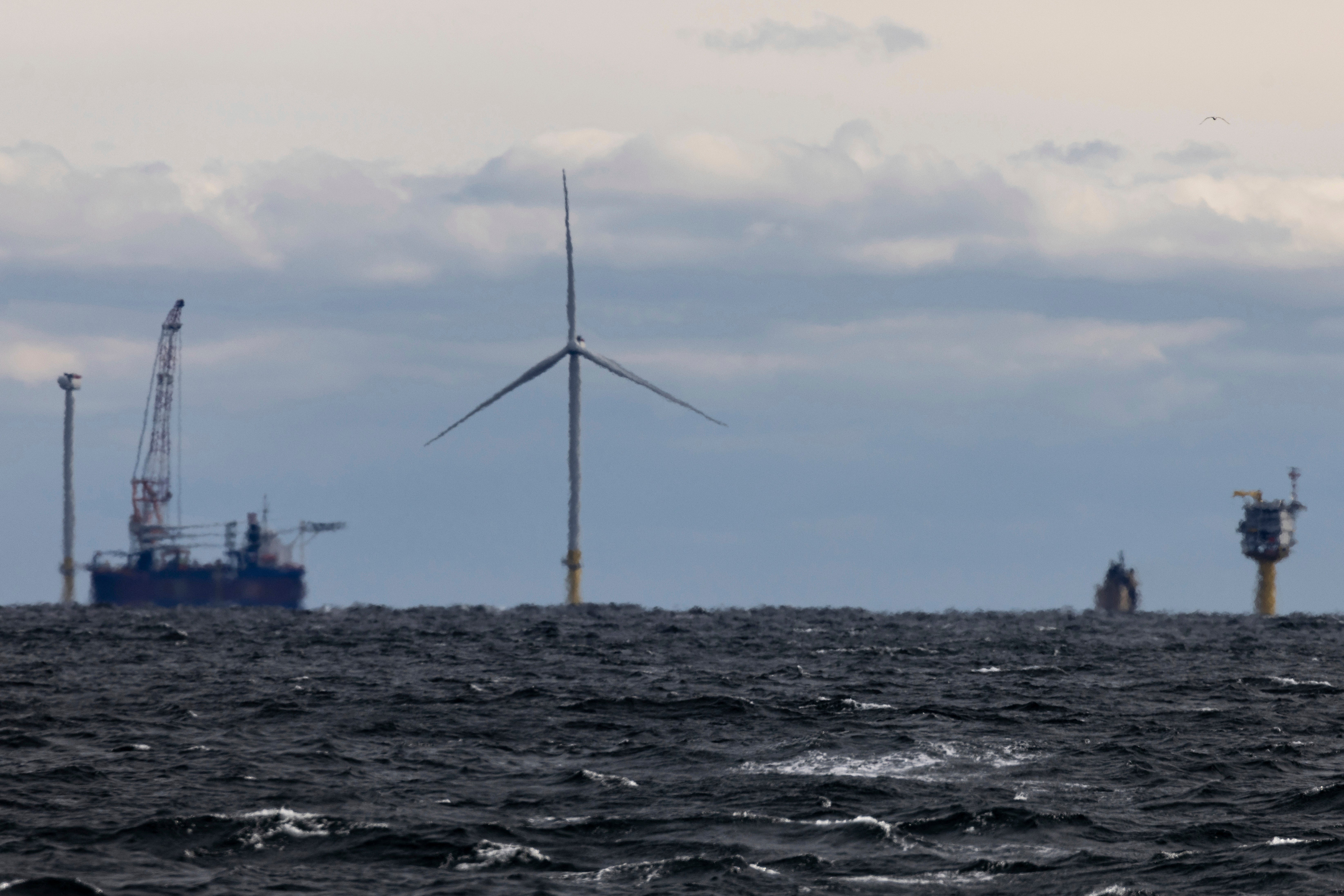Feds pick New England’s offshore wind development area, drawing cheers and questions alike
The federal government on Friday designated an area of ocean off New England for the development of offshore wind in a move that generated cheers from environmental groups but questions from fishermen

Your support helps us to tell the story
From reproductive rights to climate change to Big Tech, The Independent is on the ground when the story is developing. Whether it's investigating the financials of Elon Musk's pro-Trump PAC or producing our latest documentary, 'The A Word', which shines a light on the American women fighting for reproductive rights, we know how important it is to parse out the facts from the messaging.
At such a critical moment in US history, we need reporters on the ground. Your donation allows us to keep sending journalists to speak to both sides of the story.
The Independent is trusted by Americans across the entire political spectrum. And unlike many other quality news outlets, we choose not to lock Americans out of our reporting and analysis with paywalls. We believe quality journalism should be available to everyone, paid for by those who can afford it.
Your support makes all the difference.The federal government on Friday designated a large area off the New England coast for offshore wind production development, setting the stage for a possible lease sale within the Gulf of Maine.
The U.S. Bureau of Ocean Energy Management said in a statement that the New England zone, which renewable energy advocates have identified as crucial for the growth of wind power, “avoids important areas for lobster fishing, North Atlantic right whale habitat, and other important fishing areas and habitats.”
Democratic Maine Gov. Janet Mills, and three Maine lawmakers — Republican Sen. Susan Collins, independent Sen. Angus King and Democratic Rep. Chellie Pingree — also issued a joint statement saying the designated area “preserves vital fishing grounds and seeks to minimize potential environmental and ecological impacts to the Gulf of Maine.”
The move came a day after the country's first commercial-scale offshore wind farm opened off Montauk Point, New York. Environmental groups cheered the announcement, but some members of the commercial fishing industry, which has opposed wind development in areas where they trap lobsters, said they still have concerns about locating offshore wind in the area.
“There are still too many unanswered questions about the impacts of offshore wind on the marine environment, commercial fishermen and our fishing heritage,” said Kevin Kelley, a spokesperson for the Maine Lobstermen's Association, a large fishing trade group.
Kelley said the organization appreciates that the wind energy area removes some of the most critical fishing groups, but still believes no part of the Gulf of Maine should be “industrialized with offshore wind.”
Several environmental and labor groups came out in favor of the proposal on Friday.
“For the most part, this designation has carved out the most sensitive areas and excluded them from wind turbine construction,” said Kate Sinding Daly, senior vice president of law and policy at Conservation Law Foundation.
The wind energy area consists of about 2 million acres (0.81 hectares) off Maine, Massachusetts and New Hampshire that are 23 miles to 92 miles (37 to 148.06 kilometers) off the coast depending on the location, the BOEM said. The agency said development of the area could potentially surpass state goals for offshore wind energy in the Gulf of Maine.
BOEM is expected in a few days to announce its intent to prepare an environmental assessment of potential impacts of offshore wind leasing activities in the area.